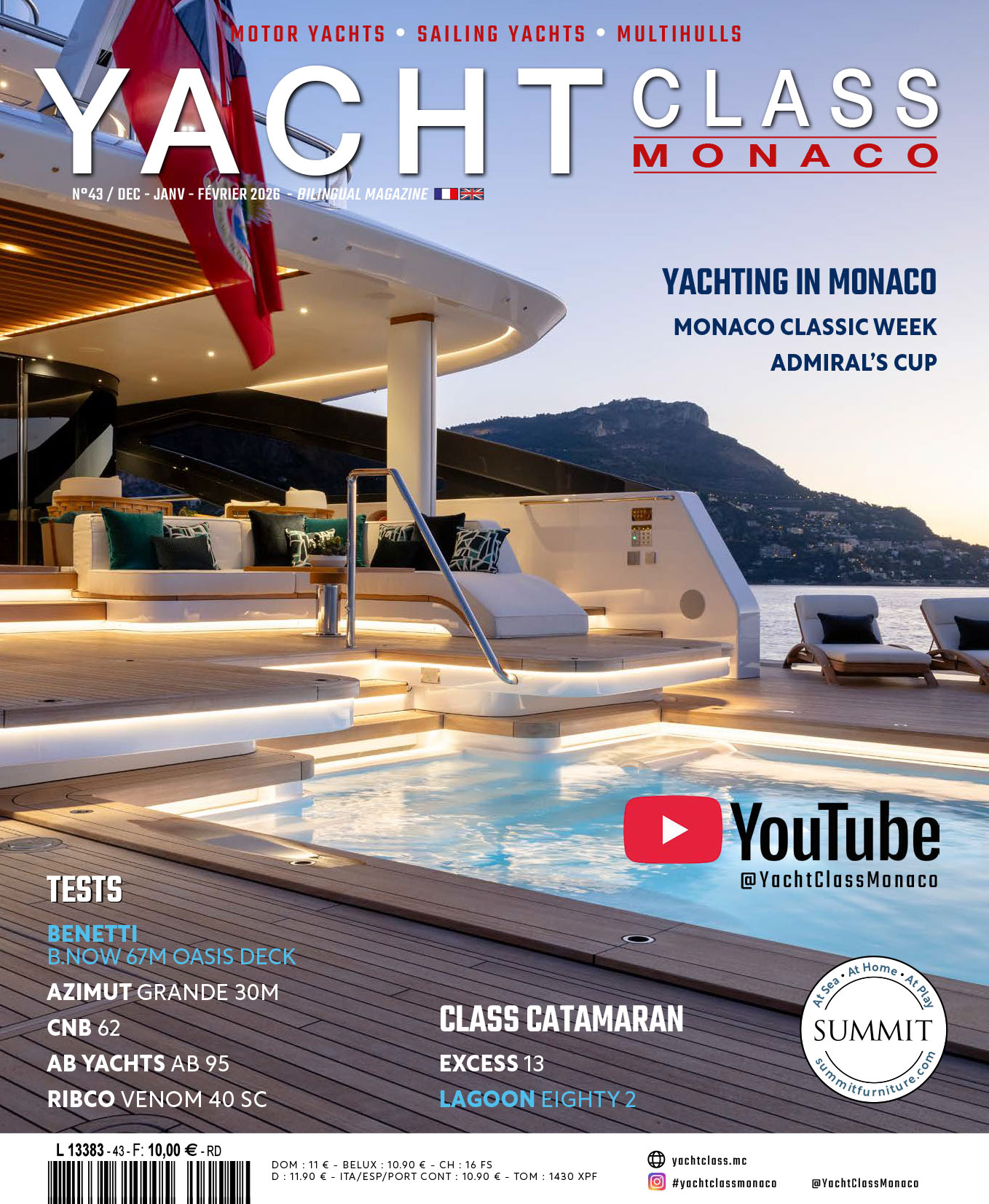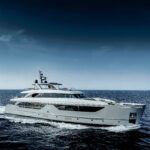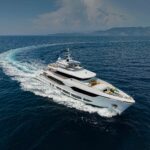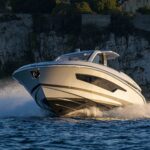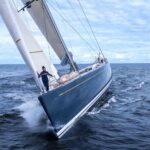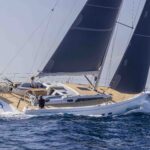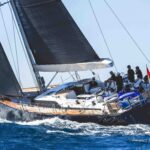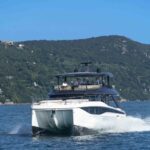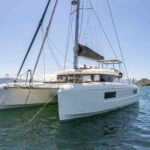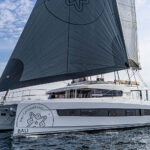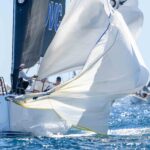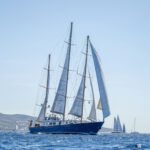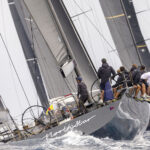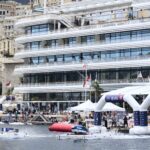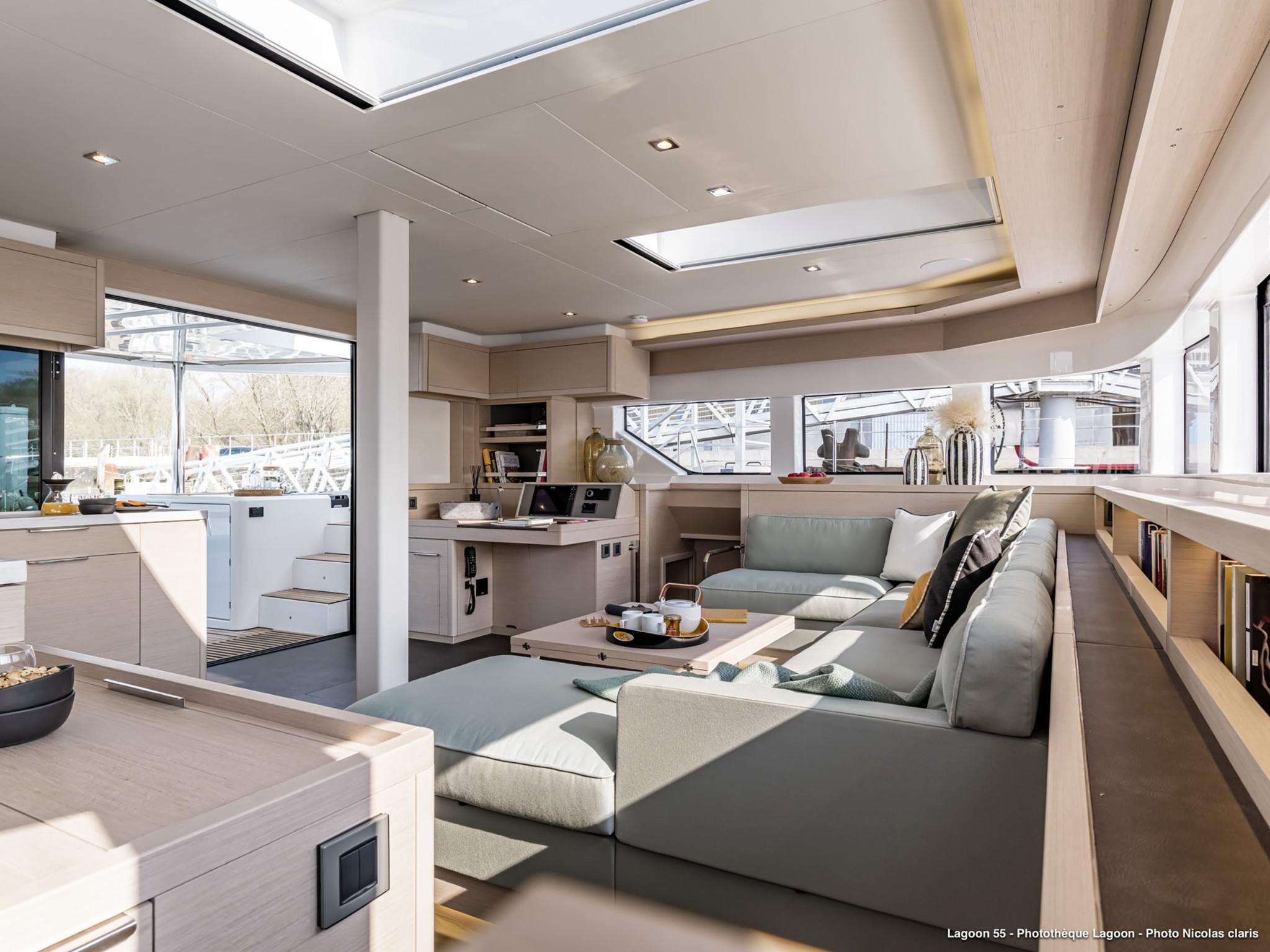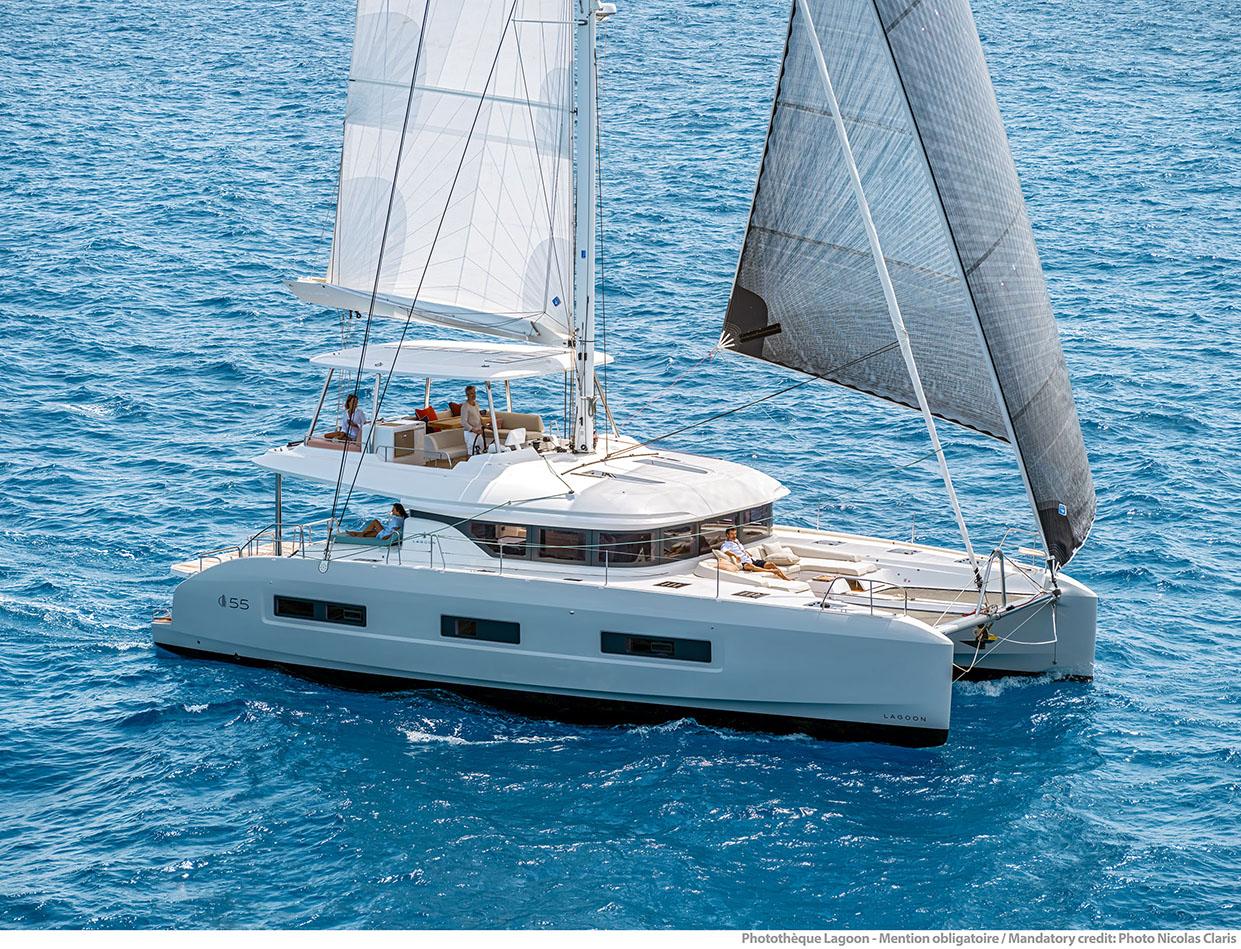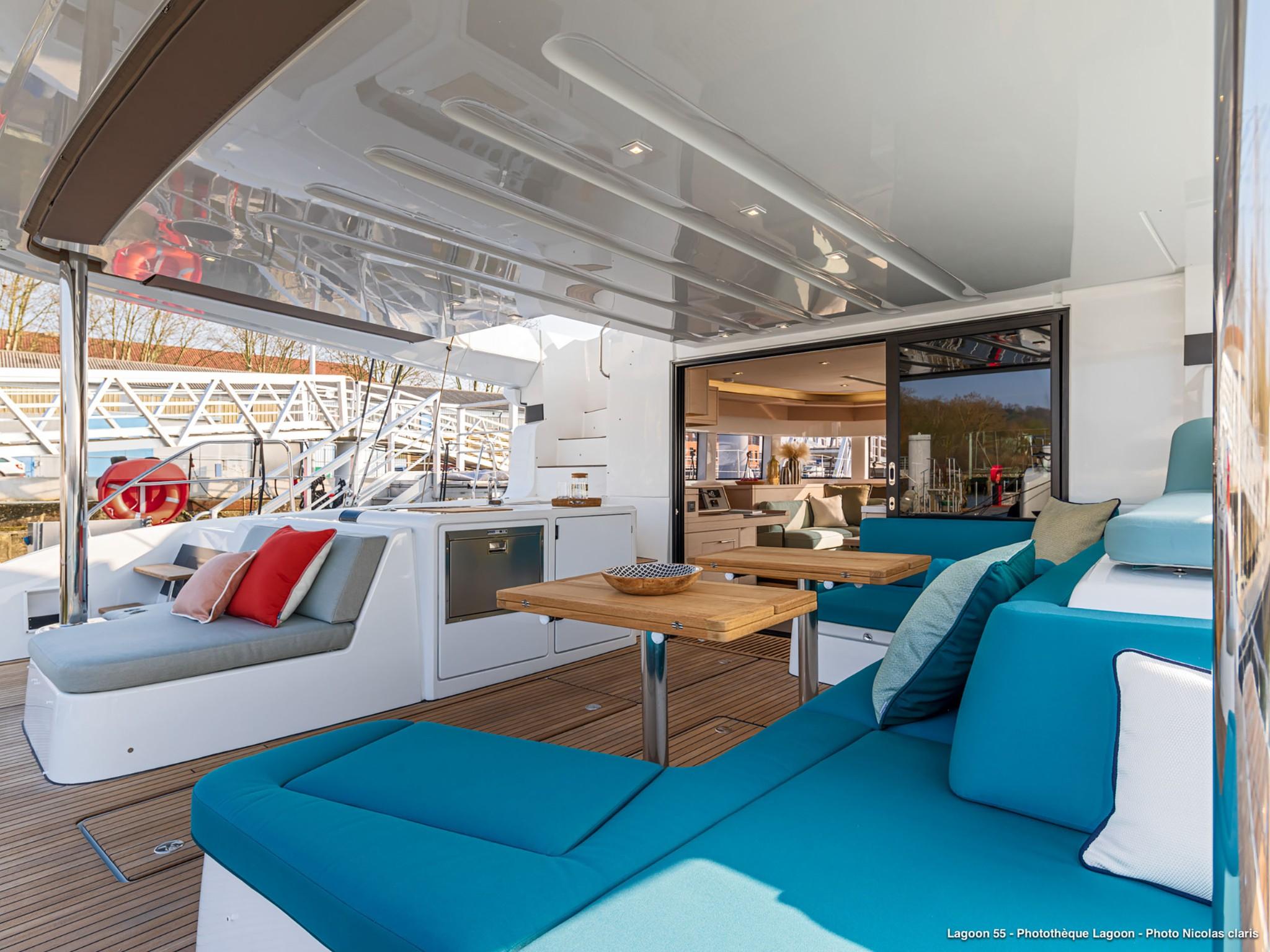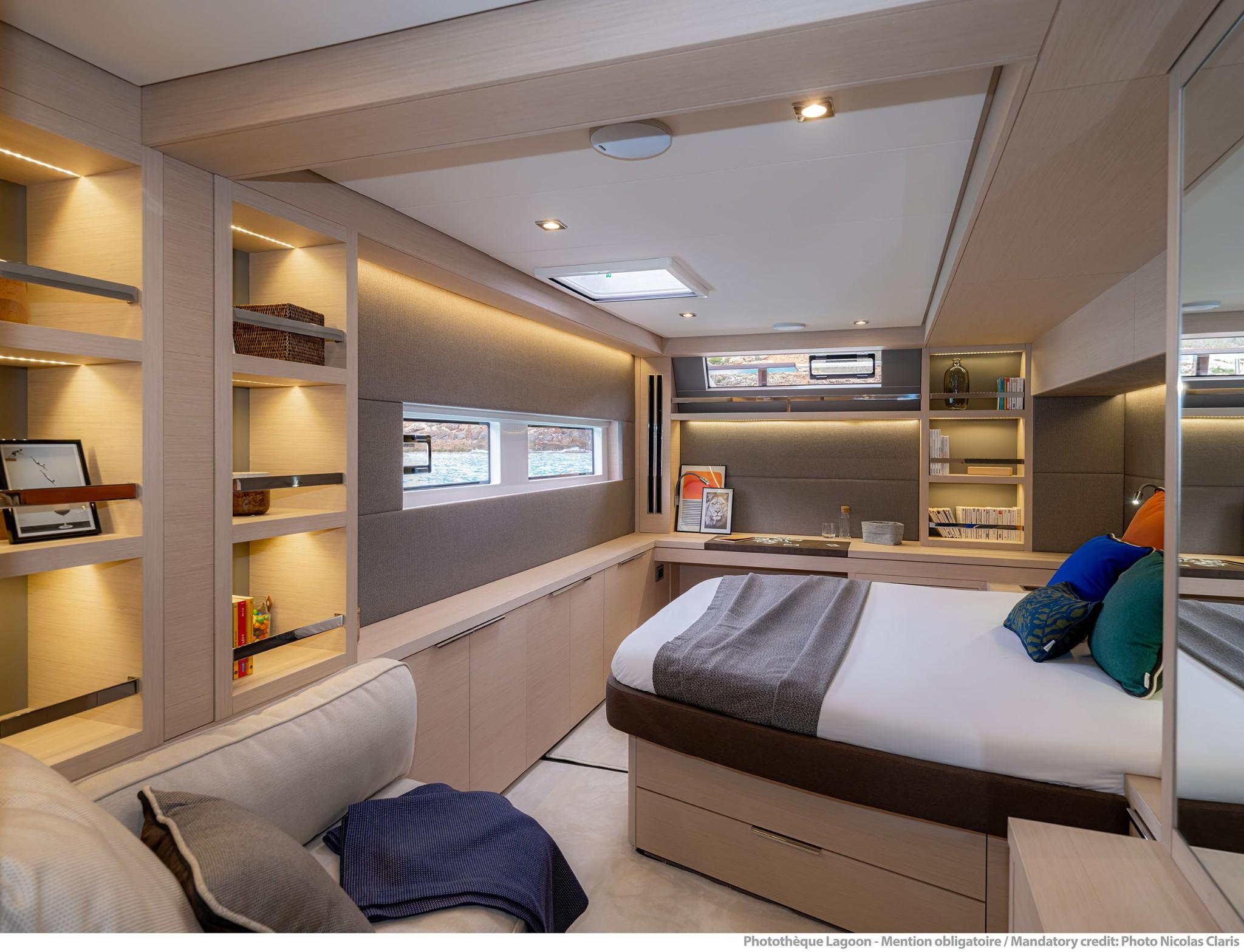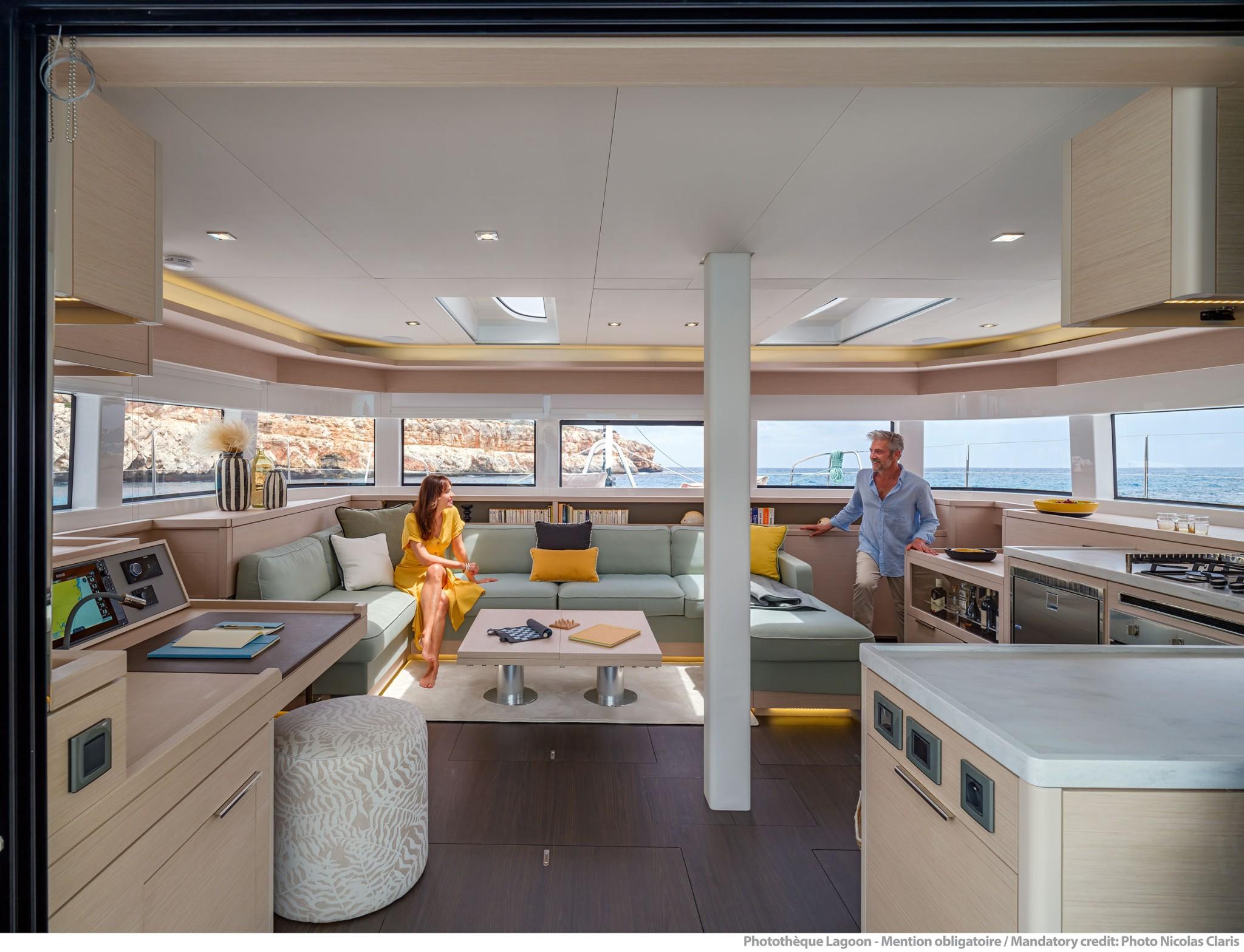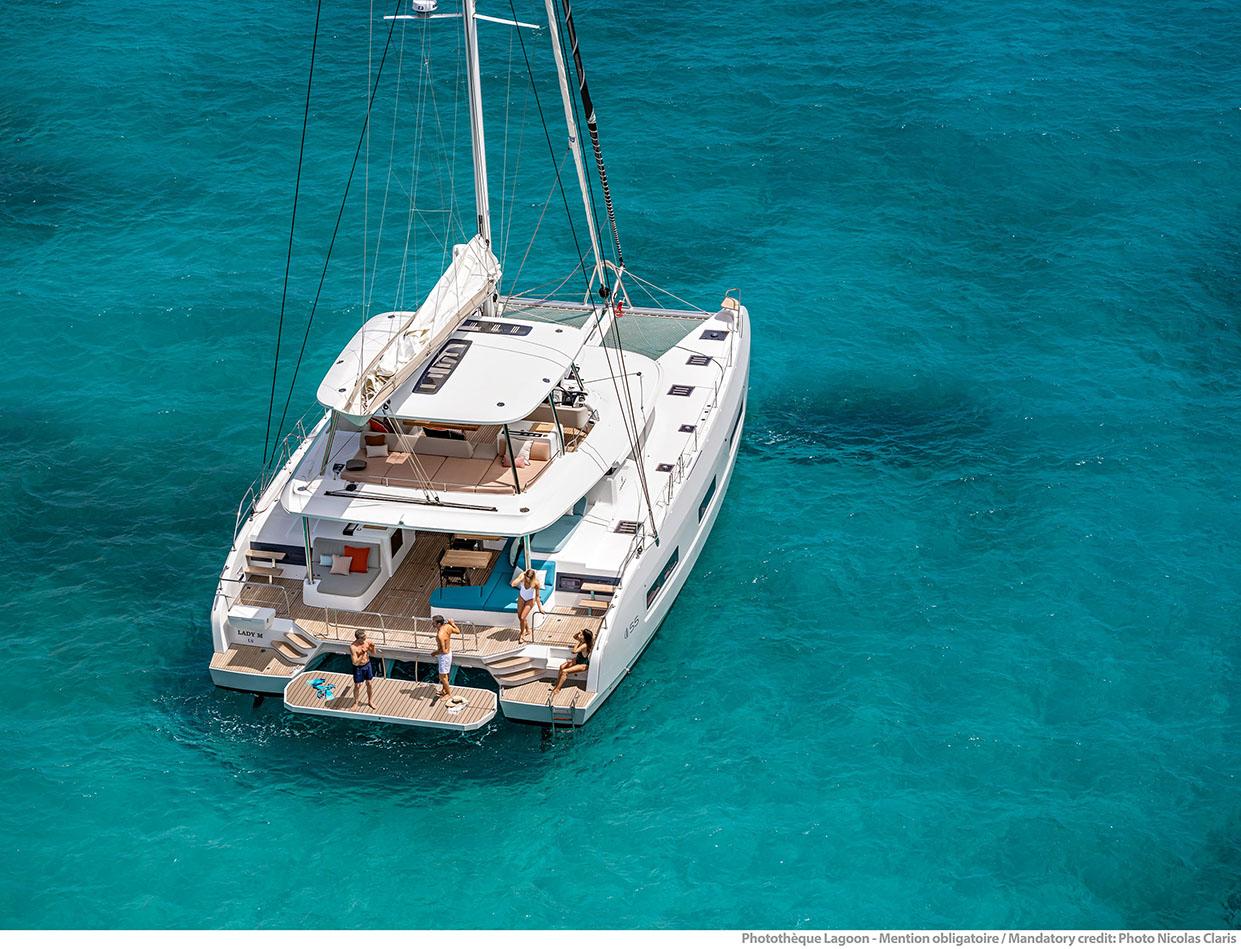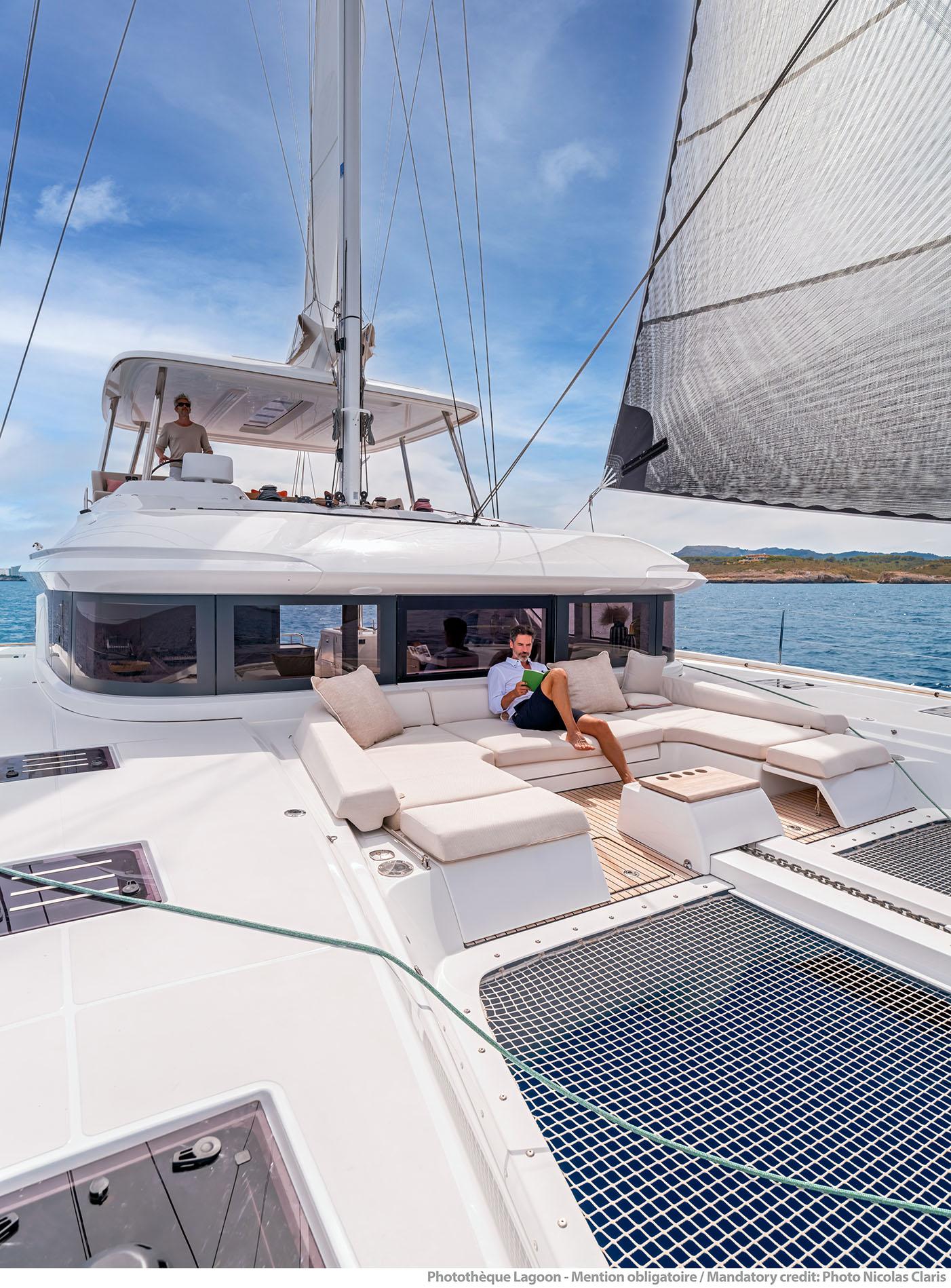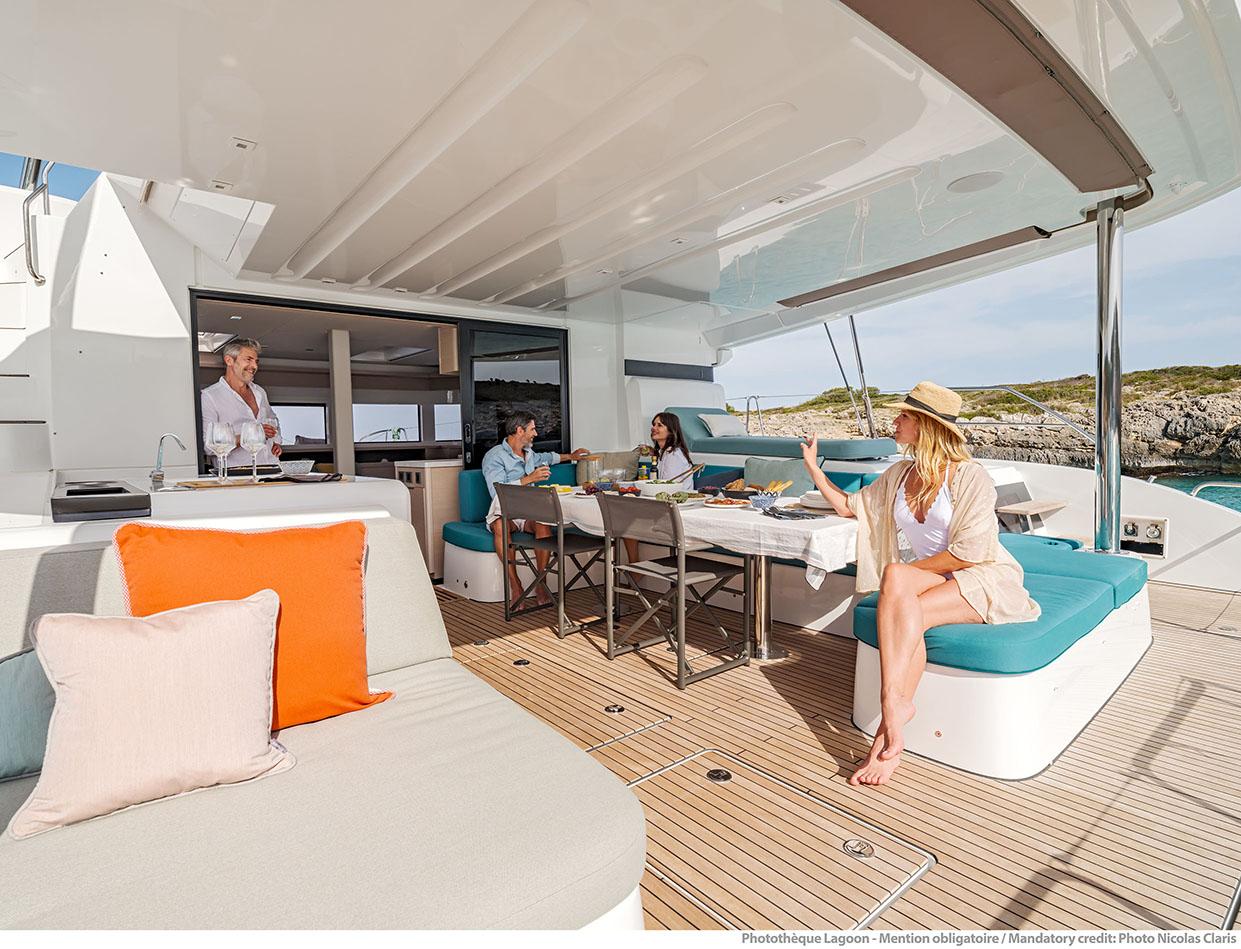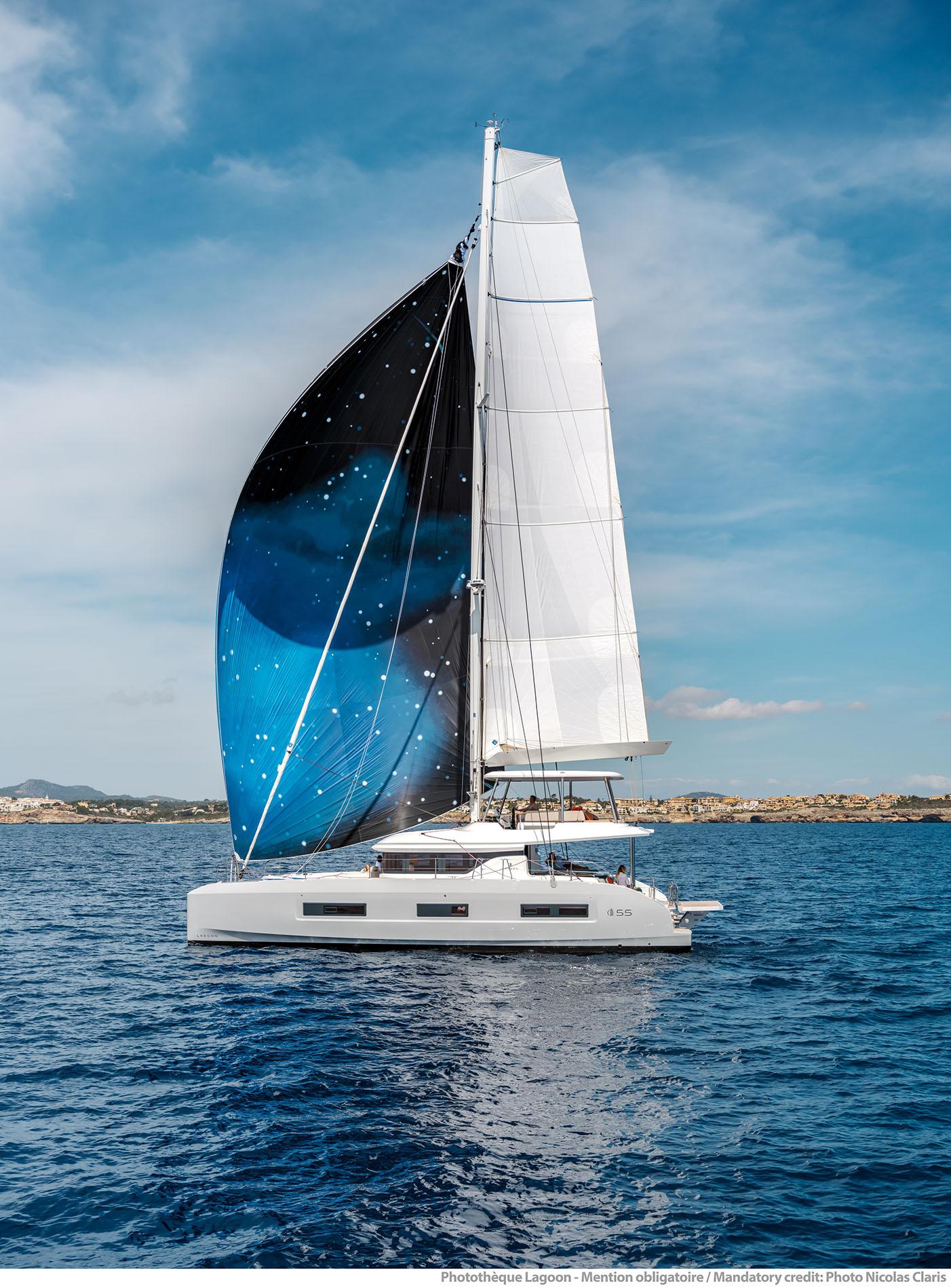Presentation
Yacht Class n°28 (march-april-may 2022)
The biggest model in the standard range, the new Lagoon 55 is clearly inspired by the superior features of the maxi yachts Sixty 5 and Seventy 7. She has more generous outdoors while, inside, the layout is more sophisticated and of higher quality. This catamaran is very attractive.
Written by: Christophe Varène – Photos: All rights reserved
To get on board a Lagoon is like embarking on one of the most beautiful yachting “success stories”. In addition, the fact that it is the new Lagoon 55 adds a historical dimension. Indeed, in 1987, after first successful experiences developed by Jeanneau Techniques Avancées (JTA) in ocean racing multihulls, the newly created Lagoon department launched the first two Lagoon 55 and some twenty units of that time are still sailing the seas of the world. There were followed by many models, from 40 to 77 feet, including the recent Sixty 5 and Seventy 7. After a growth of 20% over the last three years, no less than 6 000 catamarans fly the brand’s flag around the world. Models of 50 feet and over are now built in Bordeaux in a 100 000 m2 facilities employing 1 000 people and producing 100 boats per year.
Pleasant sensations at the helm
The conditions were cold in La Rochelle for our sea trial of this new Lagoon 55, with a breeze of about fifteen knots. The skipper at the flybridge helm can see the port manoeuvre on the screen facing him thanks to two cameras aimed at the stern skirts. The boat is fitted with a bow thruster, yet it should not be used often since, thanks to the distance between the two engines, she can rotate on the spot. To reach the open sea, the two 115 hp Nanni propels the Lagoon at a fast speed of 9 knots, 1900 rpm. Time had come to set and trim the sails helped by the three electric winches fitted near the helmsman. The mast is in aluminium while canoe boom is in carbon. The Code 0 – one can only regret that its sheets run across the side decks – was unfurled and the speed stabilized around 7 knots. It even increased by nearly 2 knots by replacing this headsail with the self-tacking genoa and by reducing the angle to have then a stronger apparent wind. The tacks were fast, taking advantage of the headway, without too much loss of speed, and one could even feel some pleasant sensations at the helm. The image of slow and massive cruising catamarans seems a bit outdated and no one will complain about that. VPLP naval architects, well-known specialists in racing multihulls, are a long-standing partner of Lagoon and have undoubtedly contributed to this positive development.
Interesting volumes in the hulls
In the four-cabin layout, the sleeping accommodations are accessible from the saloon via two six-step staircases, such a depth providing interesting volumes. The port hull has a landing accommodating the washing machine, tumble dryer, fridge and storage units. There, two cabins – one towards the bow, the other at the stern – have large double beds with a nice sea view even when lying down. Each cabin has bookshelves, wardrobes and an en suite with shower cubicle. The starboard hull houses the master suite, where what is the linen closet in the opposite hull has become a dressing area with independent shower and toilet. In addition to a large double bed, the large aft bedroom has a sofa, desk and plenty of storage space thanks to the shelves and drawers. The forward cabin is slightly smaller than the one on the other side because of the master suite.
The Lagoon 55 has undergone a real upgrade, with a special attention to comfort features. Each exterior space has been given more surface area, the interior volumes boasts carefully chosen materials while a significant work had been done regarding natural and artificial light. If everything is provided for the pleasure of coastal cruising, offshore sailing enthusiasts can also count on eight optional solar panels to increase energy autonomy. The world of luxury yachts is really not far away.
Four, five or six cabins
As the replacement to the 52, the Lagoon 55 becomes the flagship of the “standard” range, just below the two luxurious Sixty 5 and Seventy 7. With her layout and services, she was intended as a link between these two worlds. Outside, the living spaces are spread out over different levels: the flybridge – only accessible by the portside deck in the standard version – where there is dining area, a table for eight, an aft sunpad and a kitchenette. There is also the foredeck and its pleasant U-shaped seating area that can be protected either by a bimini that can be used when sailing or by a lighter shade sail and finally the vast cockpit (25 m2!) with its sofas, a beautiful table for twelve guests, a bar with fridge and ice maker and the two companionways leading to the swim areas and the hydraulic platform. The circulation between these areas is facilitated by the size of the boat and the pulpit, railings and handrails. First hull of the series to be launched, the Lagoon 55 we tested has four cabins. She can also come with five or six cabins, also all en suite. But first, let’s start with the saloon that immediately strucks by its pure lines and bright layout by Nauta Design. This place is surrounded by high windows and two deck hatches, useful to monitor the sails, for the natural lighting. Note that the installation of sunbeds on the flybridge, forward of the mast, significantly reduces the light inside. At the entrance, on portside, the chart table is quickly accessible to the skipper from the outside helm station. Opposite is the long L-shaped galley fitted with all the equipment required to seduce the finest cooks. Finally, towards the front, a welcoming L-shaped sofa surrounds a coffee table that can also be raised for inside meals during the cool season.
Technical sheet
